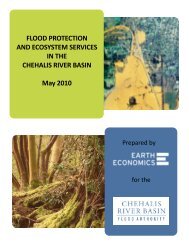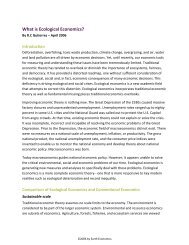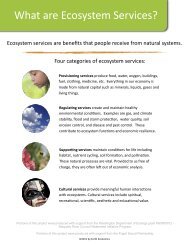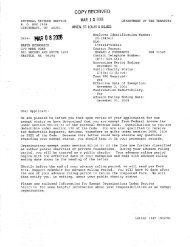The Spot Prawn Fishery: A Status Report - Earth Economics
The Spot Prawn Fishery: A Status Report - Earth Economics
The Spot Prawn Fishery: A Status Report - Earth Economics
You also want an ePaper? Increase the reach of your titles
YUMPU automatically turns print PDFs into web optimized ePapers that Google loves.
<strong>The</strong> <strong>Spot</strong> <strong>Prawn</strong> <strong>Fishery</strong>: A <strong>Status</strong> <strong>Report</strong><br />
spawning characteristically occurs earlier. Each<br />
animal spawns once as a male and once or more<br />
as a female. Spawning takes place at depths of<br />
151–212 meters (500–700 feet). Female fecundity<br />
(number of eggs) is a function of the animal’s size<br />
and ranges from 1,400 to 5,000 eggs for the first<br />
spawning, approximately 1,000 for the second<br />
spawning.<br />
Females carry the eggs under their tails on appendages<br />
called swimmerets or pleopods. Fertilized<br />
and developing eggs are carried for four or five<br />
months, until they hatch, usually over a 10-day<br />
period. Upon hatching, the larvae enter a pelagic<br />
life stage in the water column. Larvae can remain<br />
free-swimming for up to three months, their<br />
movements potentially influenced by tides and<br />
currents (Boutillier and Bond 1999a). It is important<br />
to note that estimates of the larval stage vary<br />
considerably with geographic region.<br />
<strong>Spot</strong> <strong>Prawn</strong> Life History<br />
Diagram Courtesy Jim Boutillier,<br />
Fisheries and Oceans Canada<br />
4
















